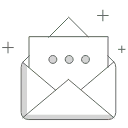What is Clubfoot?
Clubfoot is a deformity of the foot, this is when one or both feet are turned inward. This condition affects the bones, muscles, tendons, and blood vessels. Clubfoot is present from birth and most children with clubfoot have it in both feet and it is called bilateral clubfoot. This condition affects boys more than girls. Clubfoot is not a painful condition and children who receive early treatment are able to run, play, and function normally. Clubfeet does not get better without treatment. The feet remain in deformed position, and it is difficult for a child to walk.
What are the Different Types of Clubfoot?
There are two types of clubfoot.
- Idiopathic clubfoot – This is the most common type of clubfoot, the cause of Idiopathic clubfoot is unknown and it is not related to any medical problems. Feet of babies with this type of clubfoot will be stiff and hard to manipulate.
- Syndromic clubfoot – This type is more severe and difficult to treat, and it occurs when the condition is part of a larger syndrome.
Request a Free Estimate

- Travel to India for Affordable and Advanced Healthcare
What are the Symptoms of a Clubfoot?
Clubfoot is clearly visible when a baby is born.
- If both feet are affected, then the front half of the foot turns inward.
If only one foot is affected, then the following occurs:
- The calf muscle on the affected leg is smaller than the one on the other leg.
- The leg on the affected side is shorter than the other side.
- The affected foot will be short and broad in appearance.
Which Children are at Risk for Clubfoot?
A child with a family history of clubfoot is at risk to develop it. Other risk factors are:
- Multiple births such as twins or triplets
- Children born bottom first rather than head first (also known as breech birth)
- Family history of clubfoot
- Disorders of the Nervous system such as cerebral palsy and spina bifida
- Having less amniotic fluid surrounding the baby in the uterus during pregnancy (also known as oligohydramnios)
- This condition affects boys more than girls.
Babies born with clubfoot will also have a higher risk for developmental dysplasia of the hip (DDH). DDH affects the hip joint and the thighbone slips in and out of the hip socket because the socket is shallow.
How is Clubfoot Diagnosed in a Child?
- Before a child is born, parents can find out that their child has clubfoot during a prenatal ultrasound.
- After a child is born, your child’s physician makes the diagnosis of clubfoot at birth as the condition is clearly visible.
- If the diagnosis of clubfoot is made in an older infant or child, your child’s physician may ask about developmental milestones because clubfoot can be linked to other disorders.
The Diagnostic procedures of the foot may include X-rays.
Want more clarification about medical expense & treatment plan?
Plan Your Clubfoot Treatment In India
Get a Free Doctor's OpinionWhatapp UsWhat are the Treatment Options for Clubfoot?
Treatment for clubfoot will depend on:
- The age of your child, medical history and overall health
- The extent of the condition
The goal of treatment is to straighten the foot so that it can develop and grow normally. Your child will have trouble walking without treatment. Treatment options for infants include the following:
1. Non-Surgery Treatments:
There are different methods of nonsurgical treatment for infants with clubfoot. These methods include serial manipulation and casting, taping, physical therapy and splinting. A nonsurgical treatment should be the first type of treatment for clubfoot, regardless of the severity.
2. Braces:
Clubfoot can reoccur, therefore your child will have to wear braces for several years to prevent relapse. At first, the braces are worn for 23 hours in a day for about 3 months. Then they are worn at night for about 2 to 4 years.
3. Surgery:
If nonsurgical treatment fails to correct the deformity and when the deformity reoccurs and does not respond to treatment, then your child will need surgery. The surgery will depend on the type and extent of the deformity. Your child may need postoperative, surgical wires, pins, or a cast could be used to maintain the correct foot position until it has healed.
What happens during Clubfoot Surgery?
The surgical correction is not done until the child is between six and nine months of age.
- Surgery is performed to correct the clubfoot and align the foot to a normal position. The surgical procedure consists of releasing and lengthening the tight tendons and muscles of the foot.
- Many surgeons prefer to make two separate incisions, a posteromedial incision, and a small lateral incision. However, it is also possible to have one circumferential incision.
- The surgery usually takes 2-3 hours, and involves one or two days in the hospital. The corrections are held in place by inserting small pins, which are removed in the office approximately 4-6 weeks after surgery.
- After surgery, the foot will need casting for another six to twelve weeks. The casting may be followed by full-time or nighttime use of brace as recommended by your child’s physician.
What happens after Clubfoot Surgery?
- Those who undergo surgery will need more than one surgery since the deformity reoccurs as the child grows.
- Children will need regular follow-up for several years after treatment (casting or surgery) to ensure that the clubfoot does not recur.
- The most common time for recurrence is within one or two years after the treatment. However, clubfoot can also recur many years after casting or surgery.
- Clubfoot recurrence should be treated with manipulation/casting or additional surgery. Therefore, we recommend that patients continue follow-up care until the end of growth (around 18 years of age).
What is the outcome of Clubfoot Surgery?
The long- term goal of treatment is to provide your child with a foot that looks and functions properly so that long-term disabilities can be prevented. Children with clubfoot will generally do well with treatment, develop normally, and participate fully in athletic or recreational activities.
Care at Treatment Possible:
Treatment Possible is associated with the Best Clubfoot Specialist who are experienced in operating complex cases and ensure the highest success rate. We only work with Best Hospital for Clubfoot Surgery.
Our understanding of the Indian Healthcare market and our valued relation with Best Hospital for Clubfoot Surgery enables us to maintain the cost that are reasonable, affordable and transparent. Clubfoot Treatment Cost in India through Treatment Possible can be 10-20% lower than similar companies in India and 50-60% cheaper than in other countries.
You can also send your medical reports for Clubfoot surgery to care@treatmentpossible.com for free opinions and suggestions from The Best Clubfoot Specialist with the hassle-free setup of post-operative recovery care, medical travel & stay during the Medical treatment. No matter what the health condition, you always get good healthcare options and cost advantage from Treatment Possible.
Our Services
From Treatment To Recovery, We Are Always There With You!

Medical Visa Letter
We provide a Medical visa letter for which we require the scanned passport copies of the patient and attendant.

Arrange An Appointment With A Surgeon
We arrange for the appointment with the surgeon, confirm for the hospital room and operation theatre (if required)

Post Surgery Follow Up
We help you to fix your telephonic appointment for future follow-ups

Complimentary Pickup
We arrange for complimentary pickup and drop services from the airport.

All The Necessary Arrangements
We arrange for hospital admission, forex exchange, sim card and local assistance

No Need To Worry About Essential Expenses!
We help in sorting out the hospital bill, return ticket, medicines and other essential purchases.
Frequently Asked Questions:
What causes clubfoot in a fetus?
Smoking during pregnancy and insufficient amniotic fluid during pregnancy can increase the baby’s risk of clubfoot.
How long does clubfoot surgery take?
This procedure takes about 90 minutes, and you can bring your child home on the same day. After the procedure, the doctor places your child’s leg in a toe-to-thigh cast for six weeks so that the tendon heals in its new position.
When should you start clubfoot treatment?
Treatment for clubfoot usually begins in the first or second week after birth because your newborn’s bones, joints and tendons are very flexible. The goal of treatment is to improve the way your child’s foot appears and functions before he or she learns to walk, so that long-term disabilities can be prevented.
What causes clubfoot in a child?
Clubfoot is partly genetic and is a birth defect. Children are born with clubfoot for unknown reasons.
